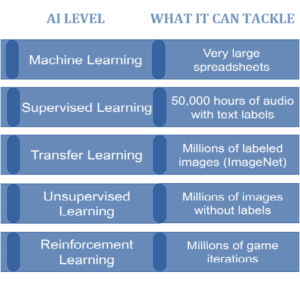Think AI is not yet affecting advertising? Google, IBM Watson Ads, and the ARF debunked this belief at a recent ARF Leadership Lab, where they offered valuable background, tips and case studies so that others can consider how to begin to leverage AI to their benefit.
Paul Donato, the ARF’s Chief Research Officer, and Henry V. Wolf, VII, Senior Data Scientist, opened the morning by explaining the history and definition of AI, and why it is growing so rapidly.
- The roots of AI began in the 1960s
- Among the many existing definitions of AI, they prefer this simple one: “software that learns.” In this sense, it functions metaphorically in a way similar to the way a brain functions.
- AI’s growth has been fueled by a number of factors, including new architectures that use less computational power, better hardware, exponential growth in the amount of data (such as location and store data) and open source software (that has increased the accessibility of AI).
They outlined five different layers of AI, noting the level of processing power by giving an example of the type of task that each can handle:
Further, they explained the difference in how Machine Learning and Deep Learning offered by AI compare:
- Machine Learning seeks to determine what data will produce a specific outcome. It requires human intervention at the outset of the process to provide relevant data inputs and define the desired outcome. Once this is done, an algorithm initially assigns random weights to various data points. It then begins to assess which data come closest to producing the desired outcome, continuing to look at the patterns in what can be billions of iterations, to learn which are most likely to produce the desired result. Once it has done this, the machine is deemed to have “learned.”
- Deep learning differs in that it can be given raw data vs. having data sets pre-defined by humans. Because it has many more layers than ML, it can leverage hierarchical learning structures to predict an outcome. However, it still will still benefit from having some direction regarding the goal.
Source: The ARF Leadership Lab: AI (2018, September 8). The ARF.
For the best practices shared in the presentation, click here.
Additional presentations by Google and IBM Watson on AI featured here.
